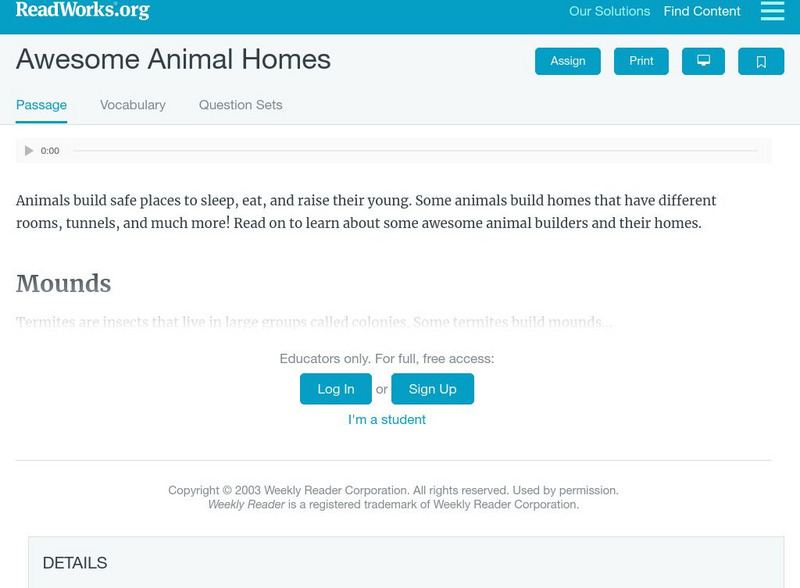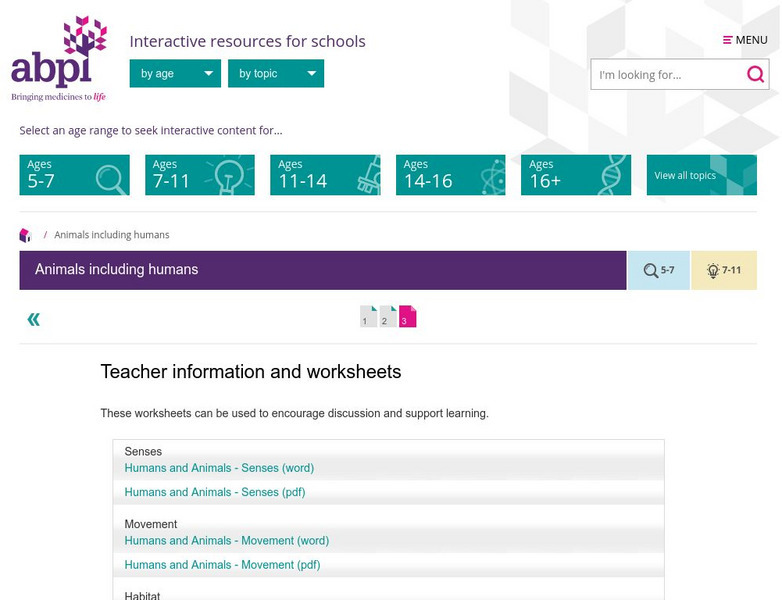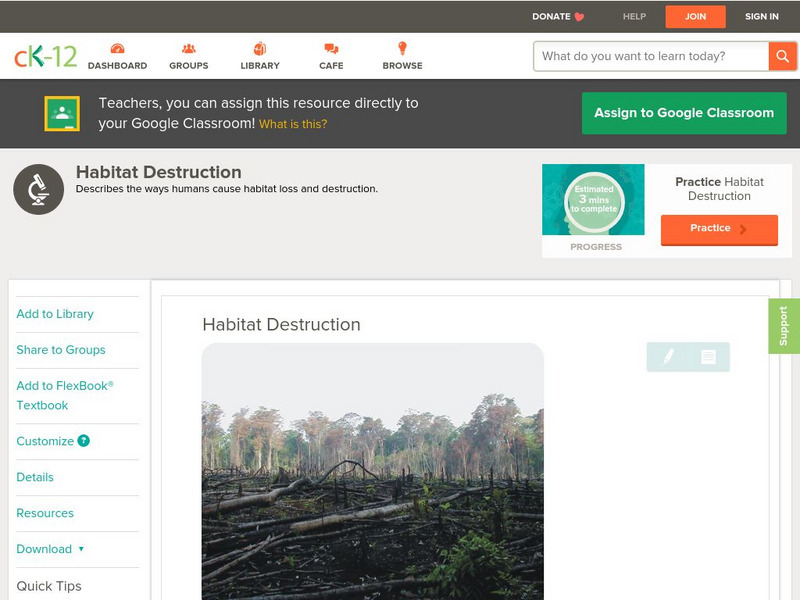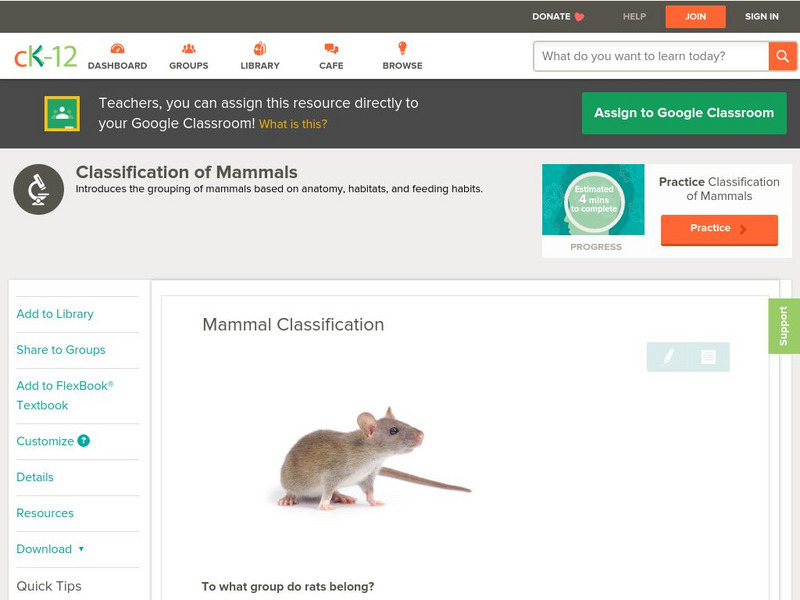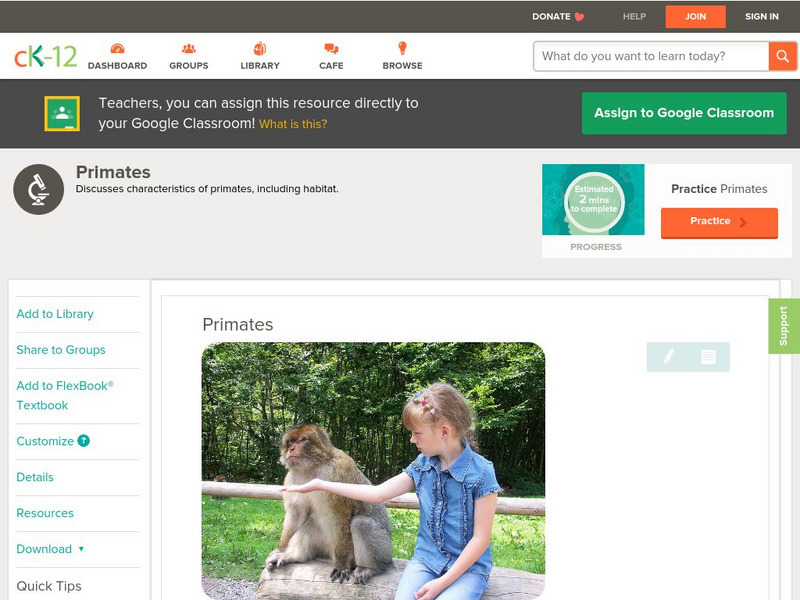American Museum of Natural History
Microbes Coloring Book and Scavenger Hunt
Coloring pages showcase microbes—bacteria, viruses, and protists. Scholars have the option to download a coloring book and scavenger hunt or color the page directly on the computer. Three paragraphs describe each microbe.
Curated OER
The Conscription Crises
Students explore roles played by Canada's prime ministers The Right Honorable Sir Wilfrid Laurier and The Right Honorable iam Lyon Mackenzie King with regards to the conscription crises of World War I and World War II.
Curated OER
Food Security, Nutrition and Health
Students examine the concepts of food security and malnutrition. In this healthy diets lesson, students discuss hunger. food security, and malnutrition. Students collages that depict a world in which no one goes hungry and share them...
Curated OER
Sustainability: Our Environment
Students explore the sustainability of our environment, the trend in rising temperatures and the emission of greenhouse cases. Using given data, students test and construct a confidence interval and the difference between two population...
Curated OER
Animals Finding Rice Paddies
Fourth graders examine the animals who live in rice paddies and create a chart. In this rice instructional activity, 4th graders link the types of animals living in each ecosystem with a bar graph. Students use colored...
Curated OER
Awesome Animals
Pupils collect data from classmates about their favorite animal. They use the ClarisWorks graphing program to enter data, graph results, and interpret data.
Curated OER
Enrichment Activities - "Mrs. Frisby and the Rats of NIMH"
Fifth graders read the novel "Mrs. Frisby and the Rats of NIMH." They discuss the various characters in the book, and the different types of conflict that take place within the book. They also research owls and rats to make comparisons...
Curated OER
Lesson Plan on Indigenous Children
Students explore indigenous, traditional and tribal cultures--their rights, protections by law, and obstacles as a people. In groups, they form their own activist groups to contribute to the global effort to preserve indigenous cultures.
Curated OER
Health and Growth
Students identify healthy foods. In this nutrition lesson plan, students review the five food groups and categorize healthy and unhealthy foods on a chart. Students develop their own menus.
Curated OER
Changing Sounds
Students identify how the pitch and the loudness of an instrument can be altered by examining the sounds made by three instruments.
NOAA
Noaa: Ocean Facts on Marine Fish Habitats
The depletion of marine fish habitats from NOAA affects more than just the fish - it can affect you too! Learn facts about the importance of habitat preservation for science, and for people like you.
Channel 4 Learning
4 L: Science Essentials: Choose Life
A great review for understanding life cycles and many aspects of living things. Find topics and their main ideas, vocabulary review, quizzes, and complementary activities for teachers to use.
Science Buddies
Science Buddies: Home Sweet Biome: How Do Plants Grow in Different Environments?
In this science fair project you will learn about biomes and how different climatic conditions affect plant growth. This can explain why some plants and animals are similar in different areas of the country, and in other parts they are not.
CK-12 Foundation
Ck 12: Life Science: 12.13 Terrestrial Biomes
Learn about land biomes and their ecology.
CK-12 Foundation
Ck 12: Life Science: 12.12 Biome
Learn how the biomes of the world are determined by their climate and ecosystem.
CK-12 Foundation
Ck 12: Life Science: Aquatic Biomes
[Free Registration/Login may be required to access all resource tools.] Aquatic biomes can be generally classified based on the amount of salt in the water. Freshwater biomes have less than 1% salt and are typical of ponds and lakes,...
Read Works
Read Works: Awesome Animal Homes
[Free Registration/Login Required] Students read about how different types of animal homes, including mounds, nests, burrows, and lodges. A question sheet is available to help students build skills in drawing conclusions.
The Association of the British Pharmaceutical Industry
Abpi: Active Science Modules: Humans and Animals Worksheets
Activities to accompany the Active science learning modules.
CK-12 Foundation
Ck 12: Life Science: Habitat Destruction
[Free Registration/Login may be required to access all resource tools.] From a human point of view, a habitat is where you live, go to school, and go to have fun. Your habitat can be altered, and you can easily adapt. Most people live in...
CK-12 Foundation
Ck 12: Life Science: Mammal Classification
[Free Registration/Login may be required to access all resource tools.] Traditionally, mammals were divided into groups based on their characteristics. Scientists took into consideration their anatomy, their habitats, and their feeding...
CK-12 Foundation
Ck 12: Life Science: Primates
[Free Registration/Login may be required to access all resource tools.] If primates are mammals, what makes them seem so different from most mammals? Primates, including humans, have several unique features. Some adaptations give...
CK-12 Foundation
Ck 12: Life Science: Mammal Characteristics
[Free Registration/Login may be required to access all resource tools.] What is a mammal? They walk, run, swim, and fly. They live in the ocean, fly in the sky, walk on the prairies, and run in the savanna. There is a tremendous amount...
CK-12 Foundation
Ck 12: Life Science: Terrestrial Biomes
[Free Registration/Login may be required to access all resource tools.] A terrestrial biome is an area of land with a similar climate that includes similar communities of plants and animals. Different terrestrial biomes are usually...
CK-12 Foundation
Ck 12: Life Science: Habitat and Niche
[Free Registration/Login may be required to access all resource tools.] Are you on the basketball team? Are you a cheerleader? Do you play an instrument in the band? Your niche would be your role or place in the school. Organisms also...













